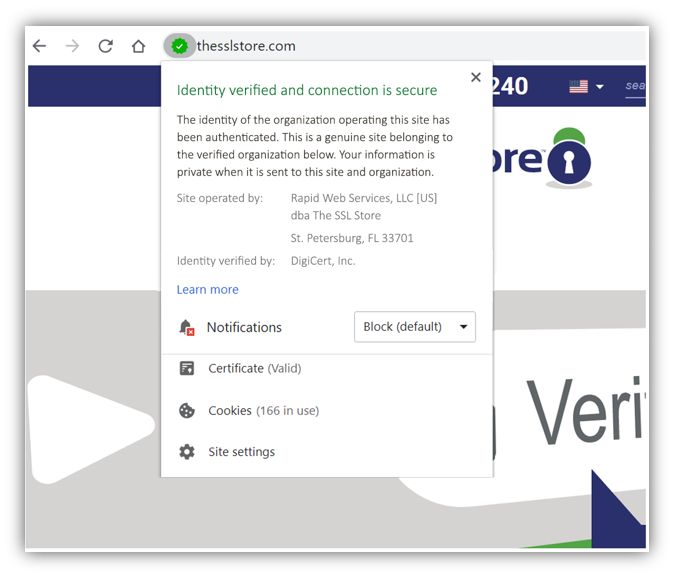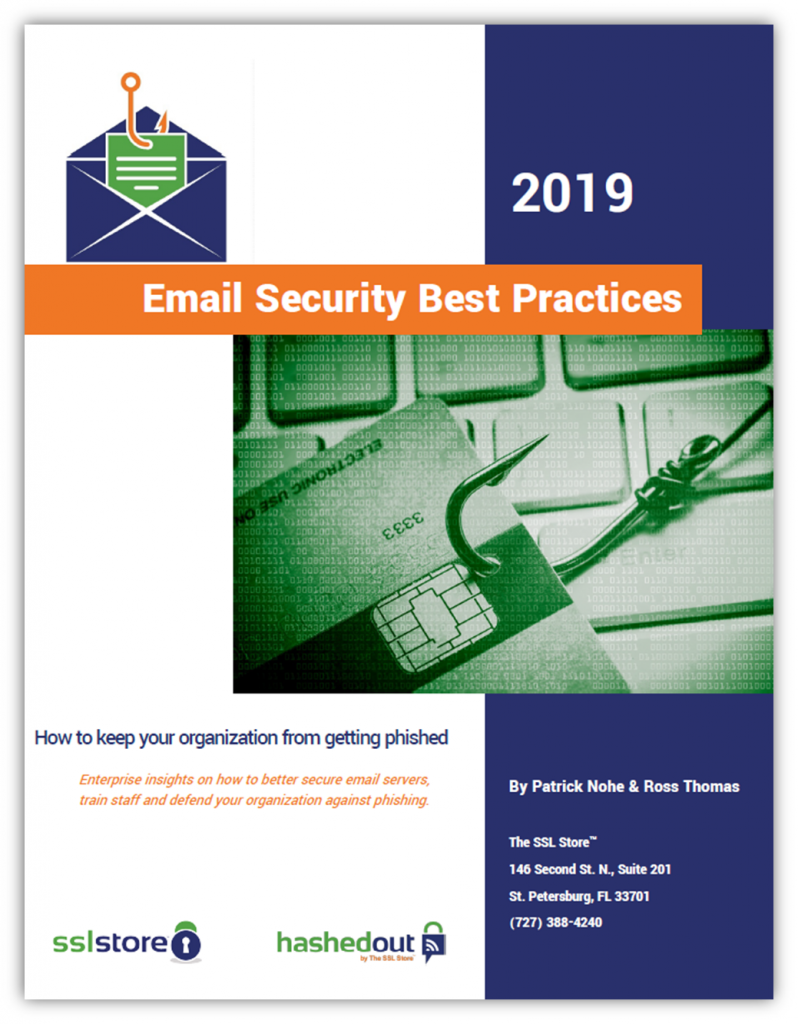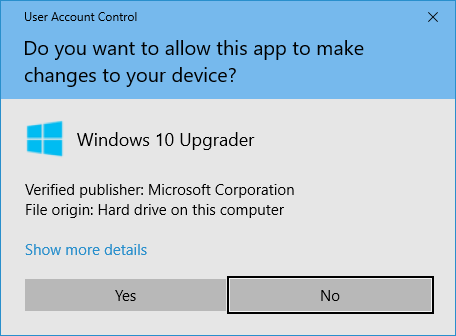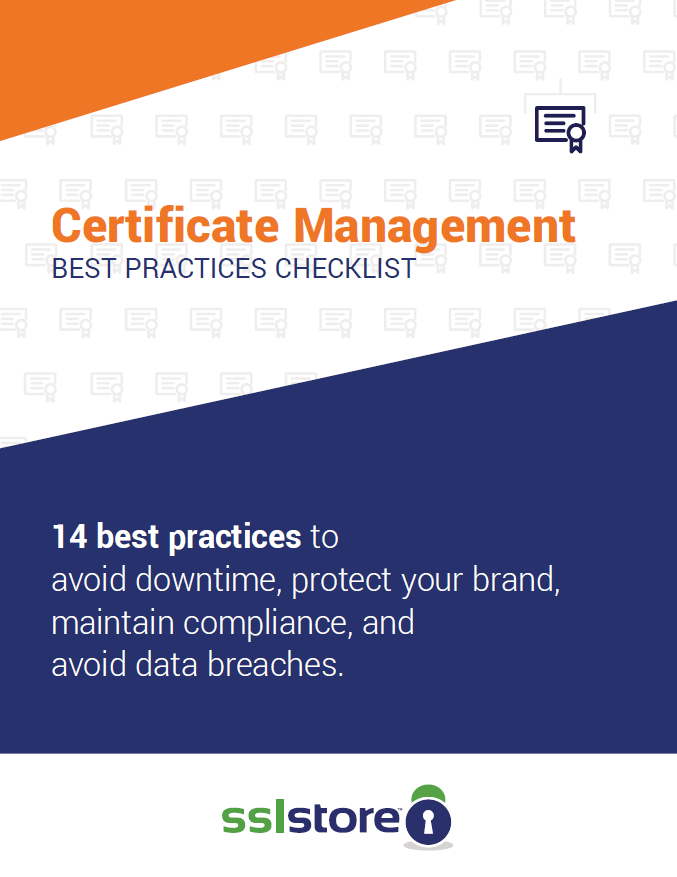What Is PKI? A Crash Course on Public Key Infrastructure (PKI)
Ever
wondered what public key infrastructure (PKI) is and how it works? It’s only
one of the most critical systems used to ensure authentication, data integrity,
and privacy…
The world of cryptography is full of brilliant ideas, and
one of those ideas is public
key infrastructure (PKI). But what is PKI and what does it entail for
organizations and data privacy? In a nutshell, it’s a system of processes,
policies, authentication, and technologies that govern encryption and is ultimately
what protects our text messages, emails, passwords, credit card information, and
cute cat photos… okay, you get the point, right?
PKI is an infrastructure that has become an essential
part of our everyday lives — and the overwhelming majority of us don’t even
know what it is! Well, that’s something that saddens all of us here at Hashed
Out, and that’s why we try to break down complicated, nerdy stuff into an
understandable form.
So, what is PKI? In this post, I’ll introduce you to the
art and science that is public key infrastructure (PKI) and everything that it
entails.
Let’s hash it out.
The
“Key” Problem in Conventional Encryption
But before we move on to answering the “what is PKI?”
question and talking about how it works, let’s first consider a simple
scenario. Let’s say there’s a spy named Alice who wants to send a confidential
piece of information to Bob, her senior officer. She can’t send this
information in plaintext as enemies could easily intercept and read/tamper with
it. That’s why she must send this information in an unreadable form that Bob
will be able to derive, but their enemies won’t. In other words, Alice will
need to encrypt the information.

But here comes a problem. If Alice locks (encrypts) the
message using a key (some logic), then how will Bob decrypt it? He must have
the key with him, right? To give the key to Bob, there’s no option other than
meeting with him face-to-face, which is totally impractical (to say the least)
or to send it via courier and risk it being intercepted.
Such an encryption method is problematic not only in the
physical world but also in the virtual world. Every time two computers want to
communicate securely, they’d have to agree on a single encryption key every
single interaction. This is a mathematical process and takes time. And if
there’s a server (for example, a bank) that communicates with multiple users,
then the server will have to perform a computational process for each client
transaction, and that would slow it down even further. All of these things
involve a variety of complex processes and agreements that must be handled at
micro speed.
That’s where PKI comes in.
How
PKI Changes Everything
In
addition to conventional encryption (also known as symmetric encryption) in
which the same key is used for encryption and decryption, PKI also involves the
use of a key pair — a public key and a private key — in a process that’s known intuitively
known as public key encryption. One of these keys encrypts information and the
other decrypts it. Both these keys are distinct, but they’re mathematically
related to each other. It means that the information encrypted with one key can
be decrypted only using the key associated with it. The public key, as the name
implies, is available publicly. The private key, on the other hand, is kept
private.
So, if Alice and Bob are using public key infrastructure
instead of the symmetric encryption method, Alice could encrypt the secret
message using the public key that she has. Bob, on the other hand, has the
private key related to Alice’s public key and can decrypt the message using it.
This way, they could communicate securely without letting their enemies
read/tamper with it. Not only that, but Bob can be sure of that the message
came from Alice and not from someone else.
Quite cool, isn’t it?
Popular Areas in Which PKI
Applies
When answering
the question “what is PKI?” you need to talk not only about what it constitutes
but also how it’s used. There are several ways that businesses and
organizations around the world use public key infrastructure:
Website Security (HTTPS/SSL)
The most
popular use of PKI is in providing secure, encrypted communication between web
browsers (clients) and web servers (websites). This is done by employing the
HTTPS protocol, which is implemented by installing an SSL certificate on the web server.
The SSL
certificate works as the identity card of the website through which browsers
can verify that they’re communicating with the right website. When you purchase
an SSL certificate, you get the public and private keys. The private key is
stored secretly on the web server, and the server uses it to prove its
legitimacy.

Through its
use of PKI, an SSL certificate:
- protects
the integrity of the message, - protects
the information from man-in-the-middle attacks, and - authenticates
both the communicating parties (browser and server).
Such a
three-pronged approach to security is vital when you send critical information
such as passwords, credit card information, private messages, etc. That’s why
it wouldn’t be an exaggeration to call PKI “the bedrock of web security.”
Secure Shell Protocol (SSH)
Secure Shell
(SSH) is a cryptographic network protocol that provides secure network services
in between hosts and users over an unsecured network. It’s used to facilitate a
secure remote login from one computer to another. SSH also has the public key
infrastructure (PKI) at its heart.
Email Security (S/MIME
Protocol)
Another
significant use of PKI is done in encrypting and digitally signing emails and
email communications. This is done through an internet standard/protocol known
as S/MIME, or what’s known as a secure/multipurpose internet mail extension). These
certificates are known as S/MIME
certificates.

Like the
SSL/TLS protocol, here too, PKI is implemented using a certificate — but the
way they do so differs. Instead of encrypting the secure communication channel,
this end-to-end encryption encrypts the message itself.
This means that S/MIME certificates not only encrypt emails but also digitally sign them to authenticate the identity of the sender and the integrity of the message itself.

Don’t Get Breached
91% of cyber attacks start with an email, which can leave your business open to devastating data breaches. Not securing your email is like leaving the front door open for hackers.
Secure Messaging
Whether it’s WhatsApp, iMessage, Facebook Messenger, or other such messaging services, we all use communications services or apps. Many of these services are encrypted using PKI and protect against attempts of data interception and tampering. End-to-end encryption in particular is something that many governments would like to do away with, though companies such as Apple, Microsoft, and Facebook are holding firm in their plans to implement it.
Document Signing
Like physical signatures to authenticate physical documents, there’s a need to sign documents digitally. For one, it helps the recipient ensure that the message is coming from a verified entity; it also allows them to ensure it’s not been tampered with. This is also done by PKI using document signing certificates.

Code/App Signing
Millions of users download millions of applications on computers and mobile devices every single day. Development companies or individuals create these programs. But what’s the guarantee that the software you’re installing is from the company/individual that you think it’s from? Can’t someone just change the name of the file and disguise malicious software as the software? Yes. And that’s a very real concern for everyone. Well, that’s where code signing certificates come in.

A code signing
certificate authenticates the identity of the developer or publisher and the
integrity of the file. This enables browsers to verify that the software itself
hasn’t been altered in any way using public key encryption. It does this by
applying a digital
signature and a one-way hash.
PKI 101: Certificates, Keys,
& Certificate Authorities
Many people
ask us, “What exactly is PKI?” Well, the answer is quite simple: it’s a system that’s
used for encryption and authentication purposes and isn’t so much a specific
product/software. Therefore, it needs some material basis to implement encryption. This comes in the form of a variety of technologies (hardware and
software), entities (such as certificate authorities, which we’ll speak to more
later), processes, policies, and procedures. This system
facilitates and governs encryption and everything that makes it possible —
everything from the basics of public keys and digital certificates to the
management of them and understanding the CAs that issue and revoke them.
Consequently,
we can say that the public key infrastructure is made of three main elements:
key pairs, X.509 digital certificates, and certificate issuing authorities.
Now that we
understand key pair, let’s understand the other two crucial components of the
PKI — digital certificates and certificate authorities (CAs).
Digital Certificates
A digital
certificate is a set of files through which we can implement various security
applications of public key infrastructure (PKI). In simpler words, it’s a
document that proves the identity of its owner. It consists of information
about the key, information about the identity of its owner, and the digital
signature of the certificate authority. There are several different types of
digital certificates, which (you may notice correspond to the popular uses of PKI
that we covered above). Here are some of the types of X.509 digital
certificates that you can find within the PKI infrastructure:
- SSL/TLS
certificates - S/MIME
certificates - Code
signing certificates - Client
authentication certificates
Certificate Authorities
Let’s
understand a simple scenario.If Alice wants to send Bob an encrypted
message, she can get his digital certificate, encrypt the information using its
public key and send him a secure message. But here comes a potential problem: How
can Alice be sure that it’s actually Bob who owns the certificate and the
public key she used? What if she actually sends a message to an enemy spy who’s
just claiming to be Bob?
Here come certificate
authorities (CAs) to the rescue!
Certificate
authorities are the trusted third-party entities that issue and manage digital
certificates. They’re the most crucial entity in PKI since millions of users —
knowingly or unknowingly — are going to rely on them.
Before issuing
a digital certificate, a CA is supposed to conduct a vetting process to make
sure that it issues the certificate to a legitimate entity. Even just a small
mistake in the vetting process could result in a mis-issuance and cause a
disaster not just in terms of the damage, but also in terms of the overall
trust in the system that is PKI. Therefore, to be a trusted CA, you must fulfil
super-stringent criteria formed by an independent body of browsers, operating
systems, and mobile devices that’s known as the CA/Browser Forum (or CA/B Forum
for short). On top of that, you need a multi-million dollar infrastructure that
includes sizeable operational elements, hardware, software, policy frameworks,
practice statements, auditing, security infrastructure, and personnel.
Advantages of Public Key Infrastructure
With all of
this in mind, there are multiple advantages of using public key encryption as
part of your public key infrastructure. What are they? Oh, I’m so glad you
asked…
Authentication
In the age
when fraudsters and scamsters are trying every trick in the book to fool users,
authentication/validation becomes an out and out necessity. When you’re
transmitting information through a website, an email, or text messages, making
sure that you’re communicating to the intended entity is a must. Thanks to the
vetting process conducted by certificate authority and the use of the private
and public key, PKI facilitates authentication in an unprecedented, smooth way.
Privacy
One of the
essential security elements when it comes to online communication is privacy.
After all, nobody wants to disclose their passwords, credit card information,
or cute cat photos. By encrypting the data between the sender and the
recipient, PKI keeps the original data secure so that only the intended
recipient can see the data in its original format.
Data Integrity
When you send
sensitive information online, it’s imperative for both the parties to have the
recipient receive the data in the unaltered form. Through a technique called
“hashing,” PKI allows the recipient to check whether the message/document/data
has remained in the same form or not.
Non-Repudiation
PKI provides a
mechanism to digitally sign online transactions (files, emails, documents,
etc.), the way we physically sign documents and stuff. This way, it acts as proof
that the person who signed it is the originator of the data. And, therefore, it
also makes it impossible for the sender to deny that he/she was the one who
signed and sent it. This is called “non-repudiation.”
Disadvantages of Public Key Infrastructure
While there
are many advantages of public key infrastructure and the encryption it
provides, we’ll admit — it’s not perfect. There are some specific disadvantages
as well that are worth noting:
Speed
PKI is an extremely secure process that delivers what it’s supposed to. A large part of the credit goes to the key pair and super-complex mathematical algorithms. However, this complexity brings computational overhead when it comes to encrypting data in large volumes. As a result, it slows down the data transfer process to a minor degree, 5 milliseconds (ms) to be precise. In terms of CPU usage, the difference between encrypted connections and unencrypted connections is found to be 2%. Although this difference is quite small, you could consider migrating to HTTP/2 to speed up the data transfer process.
Private Key Compromise
The
mathematics behind PKI is supposed to be so strong that even super-computers
(let alone hackers) aren’t able to crack it within a practical time. However,
the entire PKI security doesn’t depend on the unconquerable mathematics; it
also depends on the security of the private key as it can decrypt the data
encrypted by the public key.
Therefore, if the private key gets compromised, a cybercriminal doesn’t need to crack the super-complex mathematical algorithms. They can decrypt the data (of the past as well as of the future) with the private key and can also imitate the server to fool clients. This could result in organizational secrets, passwords, financial information, etc. being compromised. In other words, it could cause unprecedented disasters. This is a significant cause for concern while using PKI.

Manage Digital Certificates like a Boss
14 Certificate Management Best Practices to keep your organization running, secure and fully-compliant.
Reliance on Certificate
Authorities
PKI is not a
technology; it’s a system. And like every other system, it has components. One
of the key components of PKI are the certificate authorities who issue the
certificates. As we saw earlier, CAs are supposed to conduct vetting process
and sign digital certificates to make sure that certificates are issued only to
the legitimate people/organizations. But if, for some reason, the CA gets
compromised, then it could cause security mayhem for millions of people and
organizations worldwide.
How PKI Works in SSL/TLS
There are more than 4.5 billion internet users in the world, and all of them use PKI through SSL/TLS, even if they might not be aware of it. As you’re reading this sentence right now, your browser and our server are transferring data through a PKI encryption process known as an “SSL/TLS handshake.” Let’s explore this process in a bit more detail:
1. First, when
the client (browser) visits the web server upon request by the user, the client
sends the server its supported cipher suites and compatible SSL/TLS version to
initiate the connection. This is regarded as a “client hello”
message.
2. In return,
the web server checks the cipher suites along with the SSL/TLS version and
sends its public certificate to the client along with the “server
hello” message.
3. On
receiving the certificate file, the client (browser) authenticates it. If the
certificate is found to be valid, the browser initiates the process of private
key verification by encrypting the “pre-master secret/key” with the public
key of the SSL/TLS certificate.
4. In return,
the web server decrypts the pre-master secret with its private key.
5. Now, both the
client and the server generate session keys from the client random, the server
random, and the pre-master secret. This session key generated by both must be
the same.
6. The client
sends the “finished” message, encrypted with the session key.
7. The server
sends the “finished” message, encrypted with the session key.
Once all of
the above steps are done and the SSL/TLS handshake process is complete, a
secure connection is established between
the client and the browser.
Voila! That’s it.
(Note: The
above handshake process is of TLS version 1.2. Although the process is quite
complex, we’ve simplified it here for better understanding. Check out this post for an in-depth look at the SSL/TLS
process. It’s also important to note that TLS
1.3 is also in use, but that TLS 1.2 is more commonly used as of the
writing of this article.)
Final Word
We think we’ve
thoroughly answered your question “what is PKI?” As you now know, public key
infrastructure is the stone wall that keeps the cybercriminals at bay from our
emails, passwords, financial details, personal messages, etc. It’s what forms
the bedrock of today’s web security — and it’s impossible to imagine a world
without it, considering that PKI keeps us secure from many fronts.
Is PKI
unbreakable? No, it has scope for improvement; and that’s why, time after time
we see changes in the PKI ecosystem. The world’s leading certificate authorities are pro-active and are always looking for ways to improve our security. It’s safe to say that we’re in the
best hands.
*** This is a Security Bloggers Network syndicated blog from Hashed Out by The SSL Store™ authored by Jay Thakkar. Read the original post at: https://www.thesslstore.com/blog/what-is-pki-a-crash-course-on-public-key-infrastructure-pki/





